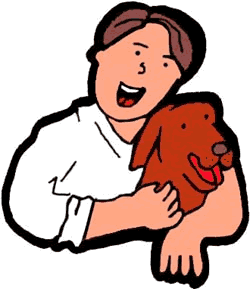Spaying your dog--The essential facts.
The question of whether or not to spay your dog will almost certainly arise at some stage during your pet's life. Armed with the following facts you will be able to come to a well considered decision.
Firstly--What is Spaying?
As with neutering a male dog, spaying involves a surgical procedure [ovariohysterectomy]. It is initiated with a general anaesthesia, then a small incision is made in the lower abdominal area to remove the ovaries and uterus.
Secondly--What are the benefits of spaying my dog?
- No unwanted pregnancies: It can happen, and without your knowledge. Males are very adept Casanovas's, and your little baby is no shrinking violet.
- Her heat cycle ends: No more blood from the vulva on your carpets, and floors.
- An end to the behaviour patterns associated with her heat cycle, including the periodic urge to roam.
- Major health advantages: Prevents a pyometra developing--a serious and sometimes fatal infection of the uterus.
- Likewise, uterine and ovarian cancers are no longer a threat, because of the removal of the reproductive organs.
- A reduction in the risk of breast cancer as your pet gets older.

Thirdly--What are the drawbacks of spaying my dog?
- The risks involved in the operation itself: The anaesthetic risk, and the risk of infection.
- Post-operative care requires more emphasis than in the neutering of a male.
- The cost: Dependent on where you live, sometimes help is available.
- The inevitable problem with weight. As with neutered dogs your veterinarian will usually recommend you to reduce your pet's daily diet by around 20%.
- The likelihood of urinary incontinence in the later stages of your dog's life. It does occur, but it's easily controlled.
Fourthly--When should I have my dog spayed?
There is a myth that a bitch should have a litter before being the spayed. This is unsubstantiated nonsense. The optimum time is slightly before, or 12 weeks following her first season. This timeframe greatly reduces the chances of her developing mammary cancer at a later stage in her life.
As a responsible pet owner it would be wise not to miss this short, but favourable period to enhance her health prospects.
A final word about post-operative care. Make sure that your dog wears an Elizabethan collar, or similar plastic cone after the procedure. One of my dogs chewed through a couple of her stitches and was close to opening up the whole wound--with the inevitable outcome.
Also don't exercise your dog off of the lead for a minimum of 10 days. I did on one occasion with another dog. This also brought on complications. These were mistakes I made through a lack of knowledge and information--Now, you know better.
Click here to learn more about Vaccinating your Dog.

For more information about spaying please consult the American Veterinary Medical Association AVMA
And, The American Society for the Prevention of Cruelty to Animals database of low cost spaying programs local to you: ASPCA
|
|
|
|
Copyright© 2007-2008.
|
| 

